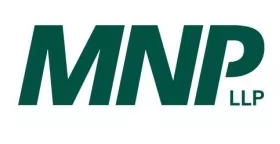Businesses that operate globally continue to face complex tax issues, and transfer pricing – the practice of establishing arm's-length prices for related-party cross-border transactions – has become more important than ever.
When it comes to transfer pricing, I consider the Organization for Economic Co-operation and Development (OECD) Guidelines for Multinational Enterprises my bible. This is where organizations working internationally find everything they need to know about the rules and regulations that govern the complex art of transfer pricing.
Transfer pricing relates to inter-company transactions. When you are moving goods, inventory, people and services around, they have to be priced based on fair market value to determine the profits to report within each country.
Large multinationals devote considerable time and energy to managing transfer pricing. But it affects any business working internationally. The issues are the same, but mid-market companies don't have the sophistication and resources to handle all of this. If they don't do it right, they can end up spending tens of thousands of dollars in penalties.
By way of example, an equipment manufacturing company in Canada selling products to U.S. customers may transfer ownership of the equipment to a U.S. subsidiary at an "appropriate" cost. If the transfer price (the price charged to the subsidiary) is too high, too much of the profit is shifted to Canada to be taxed in that jurisdiction. If it's too low, too much profit will shift to the U.S.
Determining fair market value is not an exact science. It's a very vague, very grey area and has to be done to a reasonable extent so both countries are happy. But it is legitimate, as long as you are complying with transfer pricing rules and regulations for each country.
There are two major drivers affecting change in transfer pricing practices. The volume of global transactions crossing borders has grown exponentially over the last decade. At the same time, taxing authorities are looking more and more to transfer pricing as a way to get at greater tax revenues.
The most important thing companies need to do is ensure transfer pricing policies are set up properly from the outset. I have had clients come after they've set up the business and have the tax authorities knocking. You have to be proactive by planning out and setting yourself up correctly. That means figuring out what will work operationally for you and following a transfer pricing policy that is efficient and works.
Risk mitigation also comes into play, depending on the countries you are working in. You need to know about the differences and what risks you might face. There are more than 80 OECD countries that have transfer pricing documentation requirements. If you are being audited by the Canada Revenue Agency, for example, that documentation is the first thing they want to see. If you don't have it, they will do an audit and come up with an adjustment, which could lead to substantial cash penalties, regardless of whether you owe taxes or not.
Documentation should be generated annually and must explain clearly how you run your operations, your transfer pricing policy and why it makes sense.
Transfer pricing can also open up areas of opportunity. Savvy advisers can help you use transfer pricing to manage global liability. It's never about doing something illegal. It's about optimizing your global tax rate.
Article originally published on biv.com.
The content of this article is intended to provide a general guide to the subject matter. Specialist advice should be sought about your specific circumstances.

